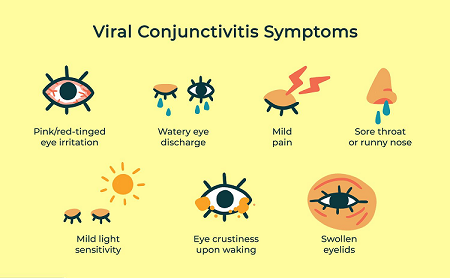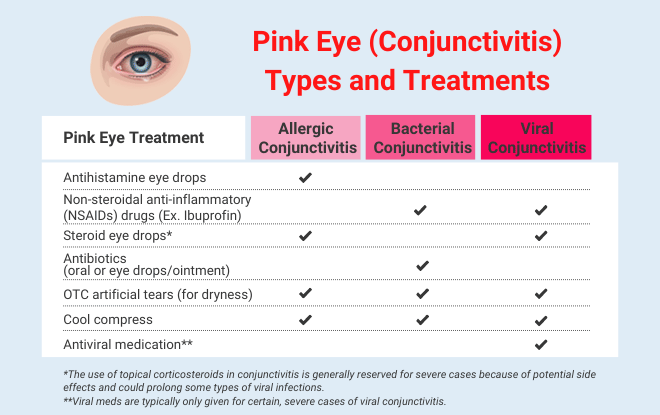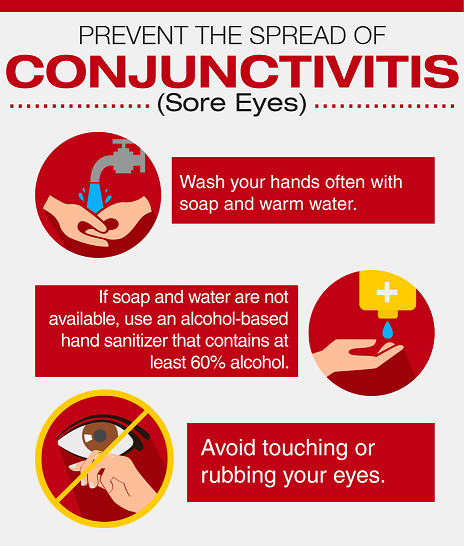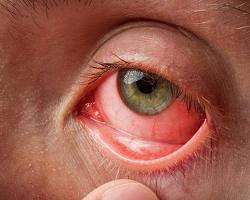Conjunctivitis or Pink Eyes : Reliable facts should know it all
Introduction :
Conjunctivitis, commonly known as “pink eye,” is a prevalent eye condition that affects people of all ages. It involves inflammation of the conjunctiva, the thin, transparent layer covering the front surface of the eye and the inner surface of the eyelids. It can cause the eyes to become red, swollen, and watery. It is a common condition that can affect people of all ages. Pink eyes can be caused by various factors and can present with a range of symptoms, however, it is usually not a serious condition and goes away on its own within a few days.
Causes :
Bacterial infection ,
Pink eye often caused by Staphylococcus aureus or Streptococcus pneumoniae.
Viral infection,
Pink eye, or conjunctivitis, is commonly attributed to the adenovirus, although it can also be triggered by other viruses, such as the herpes simplex virus and varicella-zoster virus..
Allergic reactions to pollen, dust mites, pet dander, or certain medications. When exposed to allergens, your body generates an antibody known as immunoglobulin E (IgE). IgE then stimulates specialized cells in the mucous lining of your eyes and airways to release inflammatory substances, including histamines. The release of histamine by your body can lead to various allergy symptoms, one of which is the development of red or pink eyes..
Chemicals:
Irritation or inflammation in one or both eyes can be triggered by various factors such as facial or eye makeup, air pollution, chlorine in swimming pools, or exposure to other toxic chemicals.
Risk Factors :
- Contact with an individual infected with either viral or bacterial conjunctivitis can lead to the transmission of the infection.
- Exposure to substances to which you are allergic can result in allergic conjunctivitis. .
- Using contact lenses, especially extended-wear lenses.
Symptoms of Conjunctivitis :
Viral Conjunctivitis:
- Redness: The white part of the eye (sclera)commonly becomes red or pink.
- Watery Discharge: There is a clear, watery discharge from the eye.
- Itchiness: The affected eye may feel itchy and irritated.
- Burning Sensation: Patients often report a burning or gritty feeling in the eye.
- Sensitivity to Light: Increased sensitivity to light (photophobia) may be present.
- Tearing: Excessive tearing can occur.
- Swelling: Swelling of the conjunctiva (the thin, clear tissue covering the white part of the eye) may be noticeable.
- Crusting: In the morning, dried mucus or discharge may cause the eyelids to stick together.
Bacterial Conjunctivitis:
- Redness: The eye appears red or pink.
- Yellow or Green Discharge: A thick, yellow or greenish discharge often accumulates in the corners of the eye.
- Mild to Moderate Pain: Some patients may experience mild to moderate eye discomfort.
- Gritty Sensation: A gritty or foreign body sensation in the eye is common.
- Eyelid Swelling: Swelling of the eyelids, particularly in the morning, can occur.
- Crusting: Like viral , there may be crusting of the eyelids in the morning.
Allergic Conjunctivitis:
- Redness: The eyes become red or pink.
- Itching: Severe itching of the eyes is a hallmark symptom.
- Tearing: Excessive tearing or watery eyes.
- Swelling: Swelling of the eyelids and conjunctiva.
- Burning Sensation: Individuals sometime experience a burning sensation.
- Photophobia: Sensitivity to light may occur, although it’s usually milder than in viral conjunctivitis.
- Clear, Stringy Discharge: Unlike bacterial conjunctivitis, the discharge is typically clear and stringy.
It’s important to note that these symptoms can vary in intensity and may overlap. Proper diagnosis by a healthcare professional is essential for effective treatment, as the treatment approach differs for each type of conjunctivitis. Additionally, if you suspect you have any form of conjunctivitis, it’s important to practice good hygiene, avoid touching your eyes, and seek medical advice to prevent the spread of the condition.

Diagnosis :
Pink eye is typically diagnosed through an examination of the patient’s medical history and a thorough eye examination. Swab testing of eye drainage or discharge is generally unnecessary, except in uncommon situations, such as instances involving excessive drainage, pus, or corneal involvement. Diagnosis of the specific cause of pink eye can only be made by an eye specialist. Therefore, it is essential to consult with an eye doctor to determine the underlying cause of your condition.
Complications :
In both children and adults, pink eye has the potential to induce inflammation in the cornea, leading to vision disturbances. Seeking prompt evaluation and treatment from your healthcare provider is crucial to minimize the risk of complications.
See your provider if you have:
- Eye pain.
- A feeling of something present in your eye.
- Blurred vision.
- Light sensitivity
Treatment;
Bacterial Conjunctivitis: Treated with antibiotic eye drops or ointments to clear the infection.
Viral Conjunctivitis: Self-limiting; artificial tears and cold compresses can help alleviate symptoms.
Allergic Conjunctivitis: Antihistamine eye drops, lubricating eye drops, and avoiding allergens are key.
Irritant Conjunctivitis: Flushing the eyes with clean water and avoiding the irritant is essential.
Fungal Conjunctivitis: Requires antifungal medications prescribed by a doctor.

Prevention;
Spreading of pink eyes can be control by practicing good hygiene : For instance:
- Don’t touch your eyes with your hands.
- Wash your hands often.
- Utilization of clean towel and wash cloth daily.
- Don’t share towels or washcloths.
- Change your pillowcases often.
- Throw away old eye cosmetics, such as mascara.
- Don’t share eye cosmetics or personal eye care items.
It’s important to note that pink eye is no more contagious than the common cold. Returning to work, school, or child care is acceptable as long as good hygiene practices are maintained, and close contact is avoided. However, if one’s responsibilities involve close interaction with others, it might be advisable to stay home until symptoms for oneself or one’s child have subsided.
Prevention in newborns ;
Newborns are vulnerable to bacteria found in the mother’s birth canal, which may not exhibit symptoms in the mother. In certain instances, these bacteria can lead to the development of a severe type of conjunctivitis in infants called ophthalmia neonatorum, requiring urgent treatment to safeguard their eyesight. Therefore, shortly after birth, a routine practice involves applying antibiotic ointment to the eyes of every newborn as a preventive measure. The ointment helps prevent eye infection.

Conclusion :
Conjunctivitis, though often not serious, can cause discomfort and disrupt daily activities. Understanding the different causes, types, and appropriate treatments is crucial for managing and alleviating its symptoms effectively. By taking necessary precautions and seeking timely medical attention, individuals can reduce the spread of eye infection and promote eye health within their communities. If you suspect conjunctivitis, consulting a healthcare professional is recommended for accurate diagnosis and treatment guidance.
Frequently Asked Questions (FAQ) :
What is conjunctivitis?
Conjunctivitis, often referred to as pink eye, is an inflammation of the conjunctiva, a thin, transparent layer of tissue that covers the white part of the eye and lines the inner surface of the eyelids. It can result from various causes, including infections, allergies, or irritants.
What are the common causes ?
Conjunctivitis can be caused by viral infections, bacterial infections, allergies, irritants (such as smoke or chlorine), or underlying medical conditions.
What are the symptoms of conjunctivitis?
Common symptoms include redness of the eye, itching or burning sensation, excessive tearing or discharge (which can be clear, white, yellow, or green), sensitivity to light, and swollen eyelids.
How do you know if you have conjunctivitis?
Diagnosis is typically based on a physical examination by a healthcare professional, including an eye doctor. They may also ask about your symptoms and medical history. In certain situations, a sample of the eye discharge may be collected using a swab for further analysis in a laboratory.
Is conjunctivitis contagious?
Yes, it can be contagious, depending on its cause. Viral and bacterial conjunctivitis can spread easily from person to person through direct contact with infected eye secretions or contaminated surfaces. Allergic is not contagious.
How is conjunctivitis treated?
Treatment depends on the underlying cause. Viral conjunctivitis is typically managed with supportive care, while bacterial infection often requires antibiotic eye drops or ointments. Allergic conjunctivitis may be treated with antihistamine eye drops or oral medications. Irritating eyes is managed by avoiding the irritant and using artificial tears for relief.
How long does it last?
The duration can vary depending on the cause. Viral conjunctivitis may last for 1-2 weeks, while bacterial often improves within a few days of starting antibiotic treatment. Allergic conjunctivitis can be chronic but typically waxes and wanes with exposure to allergens.
Can I wear contact lenses if I have pink eye ?
It's generally recommended to avoid wearing contact lenses while you have pink eye , especially if it's infectious. Contact lenses can trap bacteria or viruses and worsen the condition. Consult your eye doctor for guidance on when it's safe to resume wearing lenses.
How can I prevent conjunctivitis?
To reduce the risk of infection , practice good hygiene, including frequent handwashing, avoiding touching your eyes, and avoiding sharing personal items like towels or eye makeup. If you have allergies, managing allergen exposure can help prevent allergic conjunctivitis.
When should I seek medical attention for conjunctivitis?
It's advisable to see a healthcare professional if you suspect you have eye infection, especially if you have severe symptoms, pain, vision changes, or if symptoms persist or worsen after a few days. Timely diagnosis and appropriate treatment can help prevent complications and reduce the risk of spreading the infection







